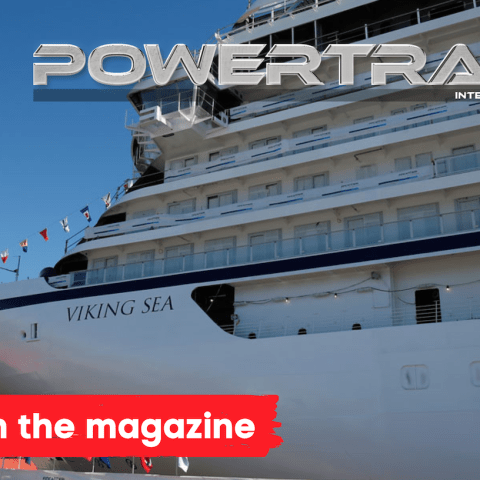sHYpS, scalable solution
The sHYps project features the onboard installation of two liquid hydrogen containers alongside the entire range of ancillary systems needed to power a ship as it navigates through the Norwegian fjords. Navalprogetti is in charge of all the project management activities. Read the full article in the September issue of Powertrain International.

The idea for the sHYpS consortium dates back to the spring of 2021, when Norway-based Viking asked Navalprogetti to carry out a preliminary study investigating the possibility to fuel their ships with liquid hydrogen. We asked Pierluigi Busetto, owner of Navalprogetti, to tell us more about it.
“Back in those years we were working on a European project – GasVessel – and we were keeping an eye on European calls for proposals we might be interested in. In 2021 a few calls were launched on hydrogen storage and we suggested that we and Viking might apply for it. That summer it took us hundreds of hours of remote meetings but we finally set up the consortium. CiaoTech – the Italian branch of PNOGroup – was selected to write the application and they provided the link among all participants. It is worth mentioning that a couple of years before we had carried out a regional project in Friuli Venezia Giulia that revolved around the same idea of using liquid hydrogen to propel ferries sailing across the Venetian lagoon, which turned out to be a nice starting point for the project design as well as for the commercial aspects of sHYpS”.
The consortium gathers 13 companies. Alongside Viking and Navalprogetti are Chart – taking care of liquid hydrogen, the University of Trieste and its spin-off Cenergy, HyPulsion – the French branch of Plug Power- Jeumont Electric, the port of Bergen, Kontor 17 – a ship management company based in Hamburg, CiaoTech, Ricardo and the Trieste branch of Lloyd’s Register.
The project features the onboard installation of two liquid hydrogen containers alongside the entire range of ancillary systems needed to power a ship as it navigates through the Norwegian fjords. “Navalprogetti is in charge of all the project management activities,” Busetto explains, “we also keep contacts with Fincantieri, as the project includes installing a demonstrator aboard a Viking ship, which requires to build a 45 feet liquid hydrogen tank, a TCS-FPR (tank connection space + fuel preparation room) to gasify the liquid hydrogen that will feed the fuel cell unit developed by Ricardo to power the onboard grid. The European call requires tests to be carried out onboard but there is also an onshore trial stage that will involve the various partner companies and a final global test to be run on the system, this will be in Trieste. Once the system has been set up onshore it will be moved on the ship. Even though Fincantieri is not a member of the consortium, it is the company that builds the ships. Given that this system will impact the ship greatly, the ship itself has to be prepared to incorporate these systems including with a view to providing for safety and automation.”
So the goal is making a technology currently being studied for application in the Norwegian fjords also scalable to fit commercial applications?
“One of the goals the call aims to is making this solution also applicable to other types of ship. We started with the most difficult application in that this is a ship that has to transport the “payload” safely while at the same time operating in full safety at ports, where containers are loaded and unloaded. This is a modular solution which means that it could be transferred to other types of vessels (open deck ships such as bulk carriers, container ships etc.) with minimal adjustments. When our application for the call was being written we carried out a study to find that a significant share of the ships traveling within the perimeter of the ECA – Emission Control Area – have less than 6 MW of installed power, which is exactly the size we had in mind when we designed the system. This is a modular system in that it includes a liquid hydrogen container, the TCS-FPR and the system in charge of power generation – the fuel cell container – can be easily transported. The project foresees that both containers finally go through a Type Approval process which will allow them to be installed – with a number of restrictions – aboard any type of ship”.
What do you think instead of a solution such as hydrogen bunkering?
“That’s currently an option for a handful of cases, such as the Norled MF Hydra ferry in Norway or the Japanese ship Suiso Frontier, built by a consortium that includes Kawasaki Heavy Industries. It is still a very complex solution to implement. We did begin to study hydrogen bunkering, too, but it is pretty challenging from a regulatory standpoint. We therefore see our own solution as an intermediate step that will make authorities, stakeholders, shipbuilders and designers familiar with hydrogen by the time standards are updated to keep pace with technology. In a way we are contributing to writing these standards in cooperation with the Registries, for example by raising issues that lawmakers had not considered.”
TO READ THE FULL ARTICLE CLICK HERE OR DOWNLOAD THE PDF









